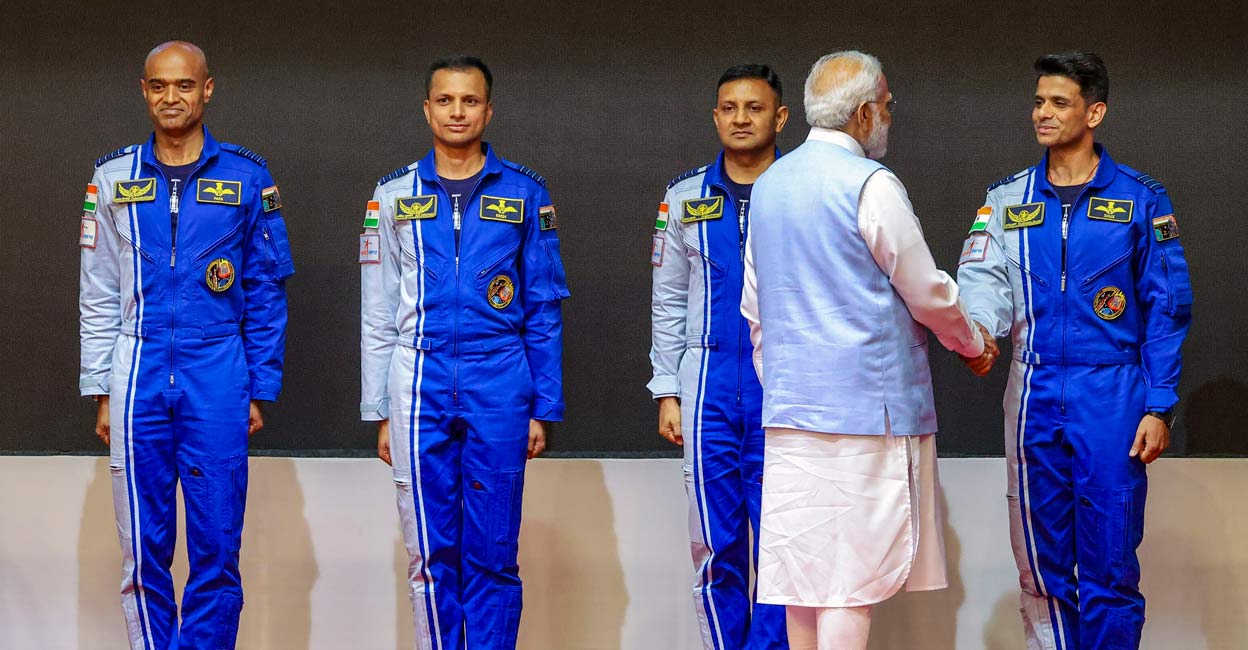Gaganyaan: How the four astronaut-designates were selected and trained

Mail This Article
Thiruvananthapuram: Four test pilots — Prashanth Balakrishnan Nair, Angad Prathap, Ajit Krishnan, and Shubhanshu Shukla — earned the 'Astronaut Wings' on Tuesday, February 27.
The four IAF fighter pilots have been selected to undergo training for India's maiden manned space mission, Gaganyaan.
Gaganyaan is India's ambitious human spaceflight program, aiming to send Indian astronauts into space. The mission is overseen by the Indian Space Research Organisation (ISRO), India's premier space agency. The primary objective of Gaganyaan is to demonstrate India's capabilities in human spaceflight, marking a significant milestone in the country's space exploration endeavours.
The men were kept away from public glare until their names were revealed. Their selection triggered curiosity about the selection process, training schedule, how they will go to the space, etc.
Why 'test pilots'?
Test pilots, who fly at higher altitudes, are daring, cautious, and have quick-thinking abilities. The four astronauts were selected from a team of 60 ace pilots in 2020.

Training
The selected astronauts underwent 13 months of training at the Gagarin Cosmonaut Training Centre in Russia. They were trained to sustain in outer space, radiation, and survival tactics if the module landed back in a snow-covered landscape, desert, or sea.
They also received training to survive in zero gravity.
On their return to India, they started training at the Human Space Flight Centre in Bengaluru. They were trained in engineering, the design of the space vehicle, propulsion, and aerodynamics, besides the basics of rocket and spacecraft.
They also underwent physical, yoga, aeromedical, and flight training in Bengaluru.
An expert team from the ISRO, Indian Defence Research Organisation (DRDO), and the Indian Air Force prepared their syllabus. Experts like India's first astronaut Wing Commander (Retd) Rakesh Sharma, and Air Commodore (Retd) Ravish Malhotral approved the syllabus.

The mission
The Indian Space Research Organisation (ISRO) had modified the Launch Vehicle Mark-III (LVM-III). The modified spacecraft is known as Human-Rated Launch Vehicle Mark-III (HLVM-III).
The orbital module in HLVM-III is located above the cryogenic propulsion stage. The orbital module contains the crew and service modules.
The crew module has Earth-like atmospheric pressure to sustain life. The double-walled module with a fortified shield helps it to land in the sea on returning to Earth.
The orbital module will have systems to regulate temperature, propulsion, power, and avionics, besides life-saving equipment like parachutes.
The total cost of the mission has been estimated to be Rs 9,023 crore.
Surviving in space
The Defence and Food Research Laboratory under the DRDO in Mysuru will prepare the food for the Gaganyaan mission. The ready-to-eat, less spicy menu will include idli, upma, biriyani, vegetable pulav, dal curry, mixed vegetable curry, chicken kurma, chapati, semolina halwa, etc.
Additional masala sachets would be provided for those have a taste for spicy dishes. Beverages, too, would be in special sachets with straws attached.

